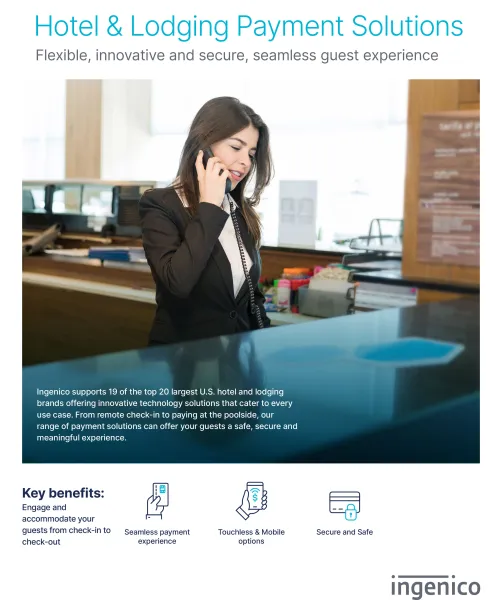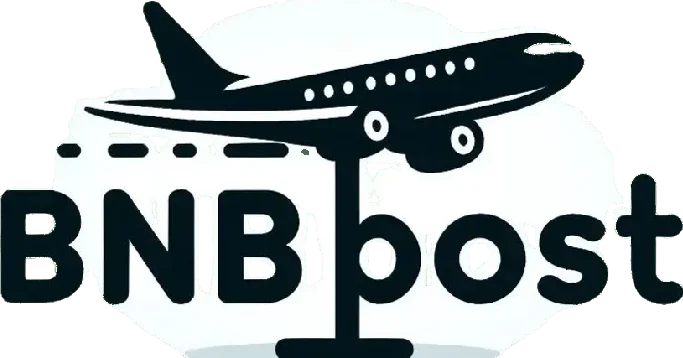Offering flexible check-in and check-out options can enhance the guest experience and set your property apart from the competition. By accommodating guests’ individual schedules, you can provide a more convenient and personalized stay, leading to higher satisfaction and positive reviews.
This flexibility can also attract more bookings and build guest loyalty, ultimately boosting your property’s reputation and revenue. Emphasizing this feature in your marketing efforts can help attract travelers seeking a hassle-free and tailored experience. Whether it’s early check-in or late check-out, providing flexible options demonstrates your commitment to meeting guests’ needs and exceeding their expectations.
In this blog, we’ll explore the benefits of offering flexible check-in and check-out options and how it can contribute to the overall success of your property.

Credit: ingenico.com
Contents
- 1 The Rise Of Flexible Hospitality
- 2 Benefits Of Flexible Check-in/check-out
- 3 Implementing Flexible Options
- 4 Case Studies: Success Stories
- 5 Challenges And Solutions
- 6 Feedback And Continuous Improvement
- 7 Marketing Your Flexibility
- 8 The Future Of Check-in/check-out Flexibility
- 9 Frequently Asked Questions
- 10 Conclusion
The Rise Of Flexible Hospitality
Experience the rise of flexible hospitality with tailored check-in and check-out options. Embrace convenience and freedom during your stay.
Shifting Guest Expectations
In today’s fast-paced world, where convenience and flexibility have become the norm, the hospitality industry has had to adapt to meet the changing needs of guests. The rise of flexible hospitality has been driven by shifting guest expectations. People no longer want to be bound by rigid check-in and check-out times when they travel. They want the freedom to arrive at a hotel or vacation rental when it suits them and to leave at their convenience.
The Competitive Edge
Offering flexible check-in and check-out options can give hotels and vacation rentals a competitive edge. By providing guests with the flexibility they desire, businesses can attract and retain more customers. This advantage becomes especially apparent when competing with traditional hotels that still adhere to strict check-in and check-out times. By offering a more relaxed approach to arrival and departure, establishments can differentiate themselves and stand out in the market.

Credit: www.thehotelleo.com
Benefits Of Flexible Check-in/check-out
Offering flexible check-in and check-out options can significantly enhance the guest experience and contribute to the overall success of your property. This approach not only increases guest satisfaction but also expands your booking potential, ultimately leading to a more prosperous hospitality business.
Enhanced Guest Satisfaction
By providing flexible check-in and check-out options, guests can enjoy a stress-free and personalized experience, allowing them to align their accommodation with their travel schedule. This flexibility eliminates the frustration of waiting for standard check-in times, leaving guests feeling valued and well-catered to.
Increased Booking Potential
The availability of flexible check-in and check-out options can significantly expand your property’s booking potential. Travelers are more likely to choose accommodations that offer flexibility to accommodate their unique travel itineraries, resulting in a higher occupancy rate and increased revenue.
Implementing Flexible Options
Implementing flexible check-in and check-out options is a great way to improve guest satisfaction and increase the chances of repeat business. One way to offer flexibility is by providing guests with the option to choose their check-in and check-out times, based on their travel plans. This approach can also help hotels manage their inventory more effectively, especially during peak periods.
Technology Integration
Hotels can leverage technology to implement flexible check-in and check-out options. For instance, hotels can use mobile apps to allow guests to check-in remotely, select their preferred room, and receive their room key electronically. This approach can help guests bypass the front desk, reduce wait times, and provide a seamless check-in experience. Hotels can also use mobile apps to allow guests to request early check-in or late check-out, subject to availability.
Staff Training And Communication
Implementing flexible check-in and check-out options requires effective communication and staff training. Staff members should be trained to handle requests for early check-in or late check-out, and they should have the authority to grant such requests, subject to availability. Hotels should also communicate their flexible check-in and check-out policies to guests, preferably before arrival, to set expectations and avoid misunderstandings.
To sum up, implementing flexible check-in and check-out options can help hotels improve guest satisfaction, manage inventory more effectively, and increase the chances of repeat business. Hotels can use technology, staff training, and effective communication to offer flexible options and provide guests with a seamless check-in and check-out experience. By doing so, hotels can differentiate themselves from competitors and stand out in a crowded market.
Case Studies: Success Stories
Offering flexible check-in and check-out options is a great way to increase guest satisfaction. Guests appreciate the convenience of being able to check in early or check out late, and it can make their trip more enjoyable. In this section, we will take a look at some success stories of hotels and resorts that have implemented flexible check-in and check-out options.
Urban Boutique Hotels
Urban boutique hotels have become increasingly popular in recent years, and many of them have implemented flexible check-in and check-out options to cater to their guests’ needs. One such hotel is the Boutique Hotel in downtown Los Angeles. The hotel allows guests to check in as early as 10 am and check out as late as 4 pm, giving them plenty of time to explore the city. The hotel has seen a significant increase in guest satisfaction since implementing these options.
Resort Destinations
Resort destinations are another type of property that can benefit from offering flexible check-in and check-out options. One example is the Island Resort in Hawaii. The resort allows guests to check in as early as 8 am and check out as late as 6 pm, giving them more time to enjoy the beautiful beaches and attractions on the island. The resort has received rave reviews from guests who appreciate the extra time to relax and unwind.
| Benefits of Offering Flexible Check-In and Check-Out |
|---|
| Increased guest satisfaction |
| Higher occupancy rates |
| More positive reviews and word-of-mouth recommendations |
| Improved guest loyalty and repeat business |
Overall, offering flexible check-in and check-out options can have a significant impact on guest satisfaction and the success of a hotel or resort. By giving guests more control over their stay and accommodating their needs, properties can build a loyal customer base and generate positive reviews and recommendations.
Challenges And Solutions
Offering flexible check-in and check-out options presents challenges and solutions for hotels. By providing guests with the flexibility to choose their arrival and departure times, hotels can enhance customer satisfaction and improve their overall experience. Implementing advanced booking systems and efficient communication channels can help hotels efficiently manage room availability and accommodate guests’ preferences.
Managing Expectations
When it comes to offering flexible check-in and check-out options, managing expectations is crucial. Guests may have different needs and preferences, which can create challenges for hotels and accommodations. However, with proper communication and clear guidelines, these challenges can be overcome.
One way to manage expectations is by providing detailed information about the check-in and check-out process. This can be done through the hotel’s website, booking platforms, or email communications. Clearly state the available check-in and check-out times and any additional fees or requirements.
It is also important to address any potential limitations or restrictions that may affect the flexibility of check-in and check-out. For example, during peak seasons or when there is a high demand for rooms, the hotel may have to enforce stricter check-in and check-out times to accommodate all guests.
Operational Adjustments
In order to offer flexible check-in and check-out options, hotels need to make operational adjustments. This can include optimizing staff schedules and resources to accommodate different check-in and check-out times.
One solution is to implement a rotating shift system, where staff members are assigned to different shifts throughout the day. This ensures that there are always enough personnel available to handle check-ins and check-outs, even during non-traditional hours.
Another adjustment hotels can make is to invest in technology that streamlines the check-in and check-out process. This can include self-service kiosks or mobile check-in options, allowing guests to easily check-in and check-out at their convenience.
Furthermore, hotels can offer the option of early check-in or late check-out, depending on availability. This allows guests to have more flexibility in their travel plans and provides a positive experience.
By implementing these operational adjustments, hotels can meet the challenges of offering flexible check-in and check-out options, enhancing guest satisfaction and attracting more bookings.
Feedback And Continuous Improvement
One way to improve guest satisfaction is by offering flexible check-in and check-out options. Feedback from guests can help identify preferred times and allow for continuous improvement in meeting their needs.
Guest Reviews
Feedback and Continuous ImprovementReceiving guest reviews is vital for enhancing services. Implementing changes based on feedback ensures satisfaction.Adapting To Feedback
Guest feedback is used to make improvements. Flexibility in check-in/check-out times is key.Ways to adapt include offering early check-ins and late check-outs. This enhances guest experience.Continuous improvement leads to positive reviews. Acting on feedback ensures guest satisfaction.Flexibility in check-in/check-out times is a key aspect. It allows for a personalized experience.Improving services based on feedback is essential for guest satisfaction. Continuous feedback loop is crucial.Marketing Your Flexibility
Marketing your flexibility through offering flexible check-in and check-out options can be a game-changer for your business. By accommodating different schedules and needs, you can attract a wider range of customers and enhance their experience.
Online Presence
Promote flexible check-in and check-out options on your website.
Highlight benefits of flexible timings to attract more guests.
Ensure website is user-friendly and easy to navigate.
Word Of Mouth
Encourage satisfied guests to spread the word about your flexibility.
Ask for online reviews mentioning your flexible policies.
Offer discounts for referrals to generate positive word of mouth.
The Future Of Check-in/check-out Flexibility
As the travel industry evolves, the demand for flexible check-in and check-out options is growing rapidly. Travelers now seek more control over their schedules, prompting accommodations to adapt to this shift.
Industry Trends
Hotels are embracing the trend of offering flexible check-in and check-out times to cater to the changing needs of travelers.
Technological Advancements
Advancements in technology have enabled hotels to streamline the check-in and check-out processes, providing guests with a seamless experience.

Credit: m.facebook.com
Frequently Asked Questions
Why Is It Important To Offer An Efficient And Reliable Check-in/check-out Procedure?
An efficient check-in/check-out is vital for guest satisfaction and smooth operations. It enhances guest experience, reduces wait times, and improves staff productivity. A seamless process can boost positive reviews and repeat business, contributing to overall success.
Which Hotels Have Digital Check-ins?
Hotels with digital check-ins include Hilton, Marriott, and IHG. These hotels offer a seamless and efficient process, allowing guests to check-in using their smartphones or self-service kiosks. Enjoy a hassle-free arrival experience with these technologically advanced options.
What Is Check-in And Check-out?
Check-in is the process of arriving and registering at a hotel or other accommodation. Check-out is the process of leaving and settling any outstanding bills before departure.
What Is Contactless Check-in And Check-out?
Contactless check-in and check-out is a hassle-free process where guests can bypass the traditional front desk and use their smartphones or other devices to complete the check-in and check-out procedures. It eliminates the need for physical contact and provides a convenient and efficient experience for guests.
Conclusion
Offering flexible check-in and check-out options is a game-changer for both guests and hotel owners. By providing this convenience, hotels can attract more customers and enhance their overall guest experience. With the flexibility to accommodate different schedules and preferences, guests feel valued and are more likely to return.
Additionally, this approach boosts positive reviews, improves online visibility, and ultimately contributes to the success of the hotel. Embracing flexibility in check-in and check-out is a win-win situation for everyone involved.



